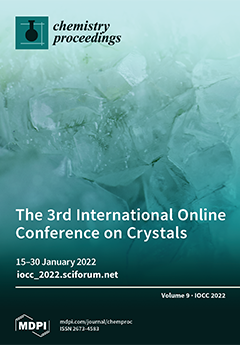Open AccessProceeding Paper
Fabrication and Characterization of New Er-Doped Yttrium–Scandium–Aluminum–Garnet Ceramics
by
Elena Dobretsova, Vadim Zhmykhov, Sergey Kuznetsov, Marina Nikova, Irina Chikulina, Vitaly Tarala, Dmitry Vakalov, Roman Khmelnitsky, Lubov Badyanova, Alexandr Pynenkov, Konstantin Nishchev, Yurii Pyrkov, Vladimir Seregin and Vladimir Tsvetkov
Viewed by 792
Abstract
We report the fabrication and characterization of yttrium–aluminum–garnet (Er:YAG) and yttrium–scandium–aluminum–garnet (Er:YSAG) ceramics for the implementation of analysis as an active medium for 1500 nm lasing. High erbium content Er:YAG and Er:YSAG ceramics are fabricated from Er:YAG and Er:YSAG powders, respectively. All ceramic
[...] Read more.
We report the fabrication and characterization of yttrium–aluminum–garnet (Er:YAG) and yttrium–scandium–aluminum–garnet (Er:YSAG) ceramics for the implementation of analysis as an active medium for 1500 nm lasing. High erbium content Er:YAG and Er:YSAG ceramics are fabricated from Er:YAG and Er:YSAG powders, respectively. All ceramic samples belong to the garnet-type cubic structure (space group
Ia3
d) without any traceable impure phases. Including Sc
3+ in the Er:YAG crystal structure leads to improved mechanical characteristics and elastic–plastic properties of the materials. The optical transmittance of ceramics is affected strongly by including Sc
3+ and increases up to 60% at about 1500 nm.
Full article
►▼
Show Figures



